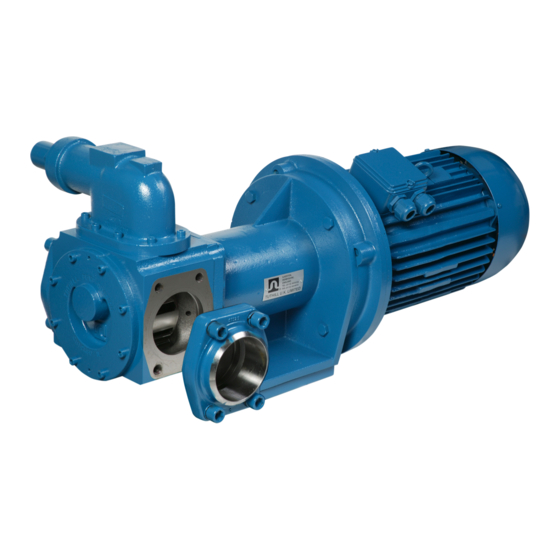
Advertisement
Table of Contents
- 1 Table of Contents
- 2 General Description
- 3 The Pumping Principle
- 4 Location
- 5 Proper Installation
- 6 Filter Protection
- 7 Startup
- 8 Disassembly of Seal
- 9 Disassembly of Pump
- 10 Inspection
- 11 Reassembly of Pump
- 12 Pump Selection
- 13 1012 - 1022 Parts List
- 14 Field Checklist
- 15 Material Returns
- Download this manual
Advertisement
Table of Contents

Summary of Contents for Tuthill 1014
- Page 1 Installation and Service Instructions 1012, 1014, 1015, & 1017 Size Pumps Excellence at work. Excellence in life.
-
Page 2: Table Of Contents
Table of Contents General Description The Pumping Principle Location Proper Installation Filter Protection Startup Disassembly of Seal Disassembly of Pump Inspection Reassembly of Pump Pump Selection 1012 - 1022 Parts List Field Checklist Material Returns Page 2 of 9... -
Page 3: General Description
The Pumping Principle Tuthill internal-gear principle is based upon the use of a rotor, idler gear and crescent shaped partition that is cast integrally with the cover. (See accompanying figure). Thus, only two moving parts comprise this efficient pumping element. Power is applied to the rotor and transmitted to the idler gear with which it meshes. -
Page 4: Proper Installation
WARNING All Tuthill pumps contain resigal ISO 32 lube oil form the factory production test. Determine if this is compatible with the fluid you are pumping. If the fluid is incompatible please consult factory directly. If the pump is to operate at elevated temperatures, it should be brought up to operating temperature gradually. -
Page 5: Startup
WARNING Failure to follow these instructions could result in serious bodily injury or death. Do not attempt to work on any Tuthill pump installation before completing the steps below. Disconnect the drive so that it cannot be started while work is being performed. Review the Material Safety Data Sheet (MSDS) applicable to the liquid being pumped to determine its charaacteristics and the precautions necessary to ensure safe handling. -
Page 6: Disassembly Of Pump
Disassembly of Pump 1. Deburr shaft especially around the keyway area. 2. Hold the pump in a vice, cover down, and remove the grub screw from the lockable shaft bearing collar. Remove collar. 3. Unscrew the 3 off 6mm bolts to remove the bearing housing (this may be tight due to the sealant used during assembly). This can be done by holding the bearing housing and twisting the body. -
Page 7: Pump Selection
These figures are based upon pumping a liquid of about 200 S.S.U. viscosity, and with a 10-inch vacuum. While Tuthill pumps will develop as high as 27 inches of vacuum, it is sound engineering to reduce the vacuum to a minimum. -
Page 8: 1012 - 1022 Parts List
• Suction lift too high for vapour pressures of liquid pumped • While Tuthill Pumps will develop as high as 27 inches of vacuum, it is wise to reduce the vacuum to a minimum • Bad leaks in suction line or port passages can be detected by submerging pressure line from discharge side of pump into a pail of oil where the air will be seen in the form of bubbles •... -
Page 9: Material Returns
• Misalignment within pump due to bad piping or poor installation, causing strains or distortion Note: Tuthill pumps are not designed to take end thrust toward the pump cover and care must be taken to prevent thrust in this direction.















Need help?
Do you have a question about the 1014 and is the answer not in the manual?
Questions and answers